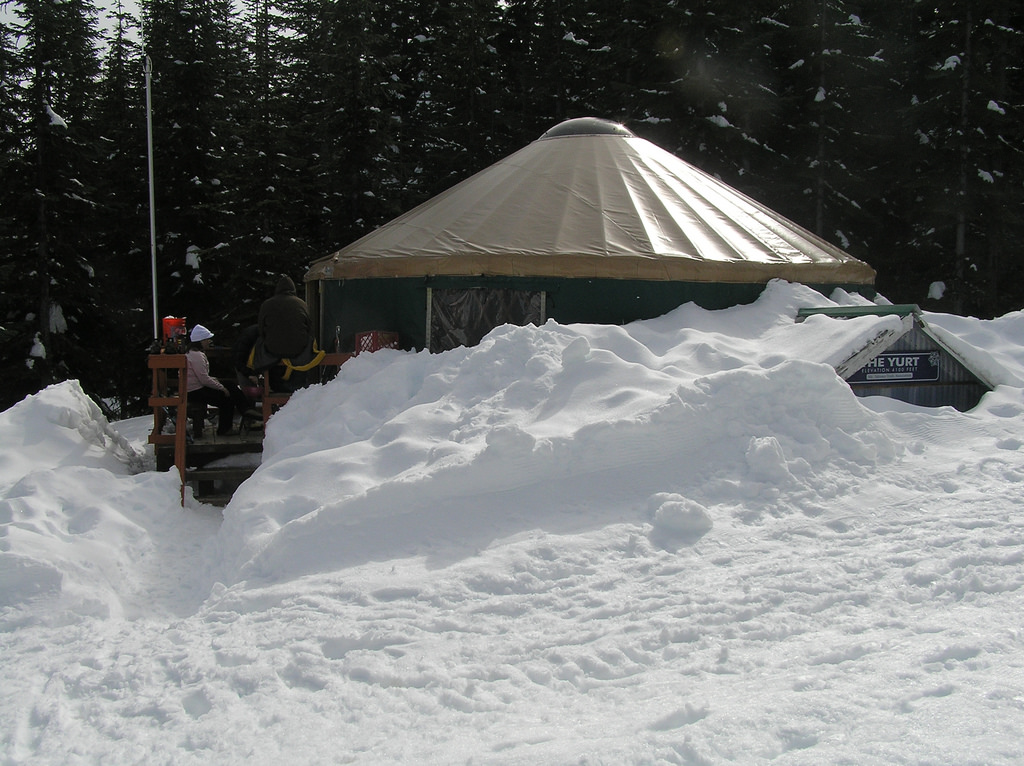The question goes like this: “Can you live in a yurt where winters are harsh and get lots of snow? Is it safe for the yurt roof?”
And the thinking behind the question is this: “A yurt is really just a tent, right? Won’t a bunch of snow just collapse the yurt?”
But therein lies the mistake! A yurt is like a tent, sure—but it’s a tent with lumber framing and modern engineered structural supports. It’s a tent that is specifically designed to withstand realities like wind and snow.
So the short answer to the question is, Heck yes a yurt roof can support snow. And it can support a heck of a lot of it.

We researched and compiled yurt info from nine yurt manufacturers around the U.S., and snow load capacity was one of the specifications we were interested in, since we live in Vermont.
The main takeaway is this: Every single yurt manufacturer designs and builds their yurts to be able to withstand a snow load equal to or exceeding a standard home roof.
Most home roofs can support a snow load of around 20 pounds per square foot.
What does 20 psf of snow actually look like? A cubic foot of water weighs 62.4 pounds, and a cubic foot of snow weighs anywhere from 5% to 32% of that (meaning anywhere from 3 to 20 pounds. A rule of thumb is one inch of snow weighs one pound per square foot. (This math is thanks to The Ice Dam Guys.)
And believe it or not, all of the yurts on the market are designed to sustain a snow load of more than 40 psf!
Use that above math and you can figure out that it would take a bunch of snow to hit 40 psf—40 inches, in fact, just sitting there on your roof (or less snow, but wetter snow). And many of the U.S. yurt manufacturers offer specialized and/or custom snow packages depending on the particular climate of your area.
For instance, Pacific Yurts can be upgraded to 90 psf. But the real whoppers on the list are Rainier Yurts and Shelter Designs, both of which have built yurts to withstand 200+ psf!
While that kind of snow load capability isn’t standard, it just goes to show what yurt engineers can achieve. And it goes to show that no matter what climate you live in, snow load shouldn’t be a worry.




